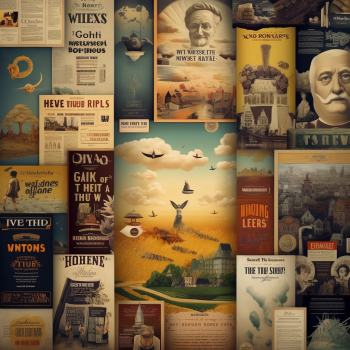Resurrecting_the_Dead_Sea_Scrolls

简述
史地类纪录片,BBC 频道 1993 年出品,是 BBC Horizon 系列之一。
封面

影片信息
官方网站
暂无
影片原始规格:
- 中文片名 :
- 中文系列名:BBC 地平线
- 英文片名 :Resurrecting the Dead Sea Scrolls
- 英文系列名:BBC Horizon
- 电视台 :BBC
- 地区 :英国
- 语言 :英文
- 版本 :TV
- 发行时间 :1993
影片内容介绍
剧情简介
In the spring of 1947 Bedouin goat-herds, searching the cliffs along the Dead Sea for a lost goat (or for treasure, depending on who is telling the story), came upon a cave containing jars filled with manuscripts. That find caused a sensation when it was released to the world, and continues to fascinate the scholarly community and the public to this day.
The first discoveries came to the attention of scholars in 1948, when seven of the scrolls were sold by the Bedouin to a cobbler and antiquities dealer called Kando. He in turn sold three of the scrolls to Eleazar L. Sukenik of Hebrew University, and four to Metropolitan Mar Athanasius Yeshue Samuel of the Syrian Orthodox monastery of St. Mark. Mar Athanasius in turn brought his four to the American School of Oriental Research, where they came to the attention of American and European scholars.
It was not until 1949 that the site of the find was identified as the cave now known as Qumran Cave 1. It was that identification that led to further explorations and excavations of the area of Khirbet Qumran. Further search of Cave 1 revealed archaeological finds of pottery, cloth and wood, as well as a number of additional manuscript fragments. It was these discoveries that proved decisively that the scrolls were indeed ancient and authentic.
Between 1949 and 1956, in what became a race between the Bedouin and the archaeologists, ten additional caves were found in the hills around Qumran, caves that yielded several more scrolls, as well as thousands of fragments of scrolls: the remnants of approximately 800 manuscripts dating from approximately 200 B.C.E. to 68 C.E.
The manuscripts of the Qumran caves include early copies of biblical books in Hebrew and Aramaic, hymns, prayers, Jewish writings known as pseudepigrapha (because they are attributed to ancient biblical characters such as Enoch or the patriarchs), and texts that seem to represent the beliefs of a particular Jewish group that may have lived at the site of Qumran. Most scholars believe that the Qumran community was very similar to the Essenes, one of four Jewish “philosophies” described by Josephus, a first century C.E. Jewish historian. Some have pointed to similarities with other Jewish groups mentioned by Josephus: the Sadducees, Pharisees, and Zealots.
We do not know precisely who wrote those sectarian scrolls, but we can say that the authors seemed to be connected to the priesthood, were led by priests, disapproved of the Jerusalem priesthood, encouraged a strict and pious way of life, and expected an imminent confrontation between the forces of good and evil. The Qumran library has proven to be enormously informative. From these texts we have increased our understanding of the transmission of the Bible, we have learned more about the development of early Judaism, and we have gained insight into the culture out of which emerged both Rabbinic Judaism and Christianity.
截图

参考信息
相关的纪录片
暂无
相关领域
| 内容 宗教类 | 天主/基督教 |
|---|---|
| 史地类 | 历史 |
| — | — |
| 文化艺术类 | 书/画/文学 |
| — | — |
网路消息
暂无
Category:片名 Category:BBC Category:1993 Category:BBC Horizon Category:2. 宗教类 Category:2.3 天主/基督教 Category:6. 史地类 Category:6.1 历史 Category:6.111 古代和上古史 Category:6.2 地理 Category:6.22 亚洲 Category:6.224 西亚 Category:6.2246 以色列 Category:6.2248 巴勒斯坦 Category:7. 文化艺术类 Category:7.1 书/画/文学 Category:7.19 其它图文 Category:缺翻译